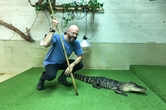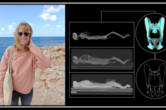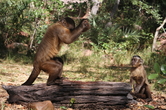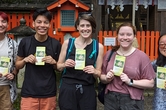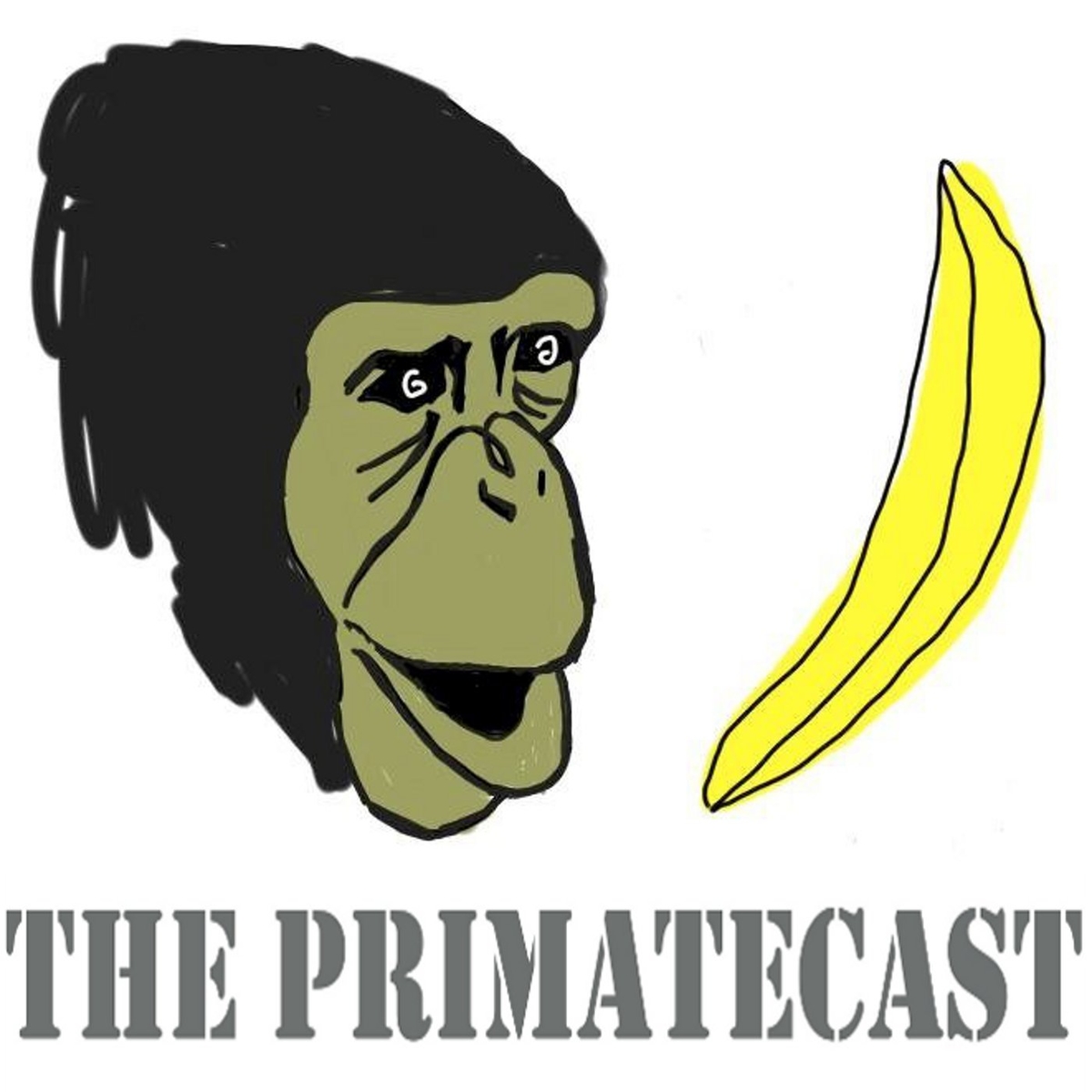What are skulls to chimpanzees?
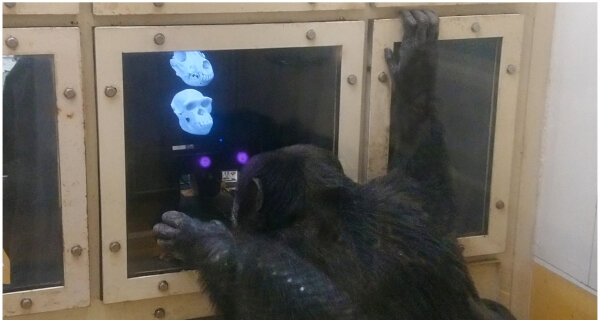
Here on Inuyama Campus, researchers study primates and other animals, alive and dead (think fossils and roadkills). But no one is more dedicated to uncovering the cognitive and behavioral connections between the living and the dead than André Gonçalves, who recently defended his doctoral dissertation. André seeks to understand how different mammals, and non-human primates in particular, respond to deaths of other individuals, and how that capacity has evolved. This field of study is called comparative thanatology.
As he explains in our interview below, there is actually a lot of groundwork to be laid before such big questions can be answered, and that includes finding out how animals react to materials that are associated with death, such as bones. To that end, his most recent study with EHUB faculty members (and valued CICASP colleagues) Yuko Hattori and Ikuma Adachi explored the levels of interest chimpanzees show toward skulls of different mammals, including their own species. We hope the following conversation with André on the elusive theory of death in non-human animals will entice you to check out their original paper (it's open access!).
[Banner image from Gonçalves et al. 2022 (CC BY 4.0)]
CICASP: How did you become interested in your research topic?
Gonçalves: I became interested in Comparative Thanatology during my masters, having read James Anderson's early papers on it and Paul Pettit's book on the origins of human burial around a decade ago. Following those publications, I ended up writing an essay for one of my classes on non-human primates' responses towards their dead which would become the topic of one of my papers.
It seemed at the time a very thought-provoking topic, and something I wanted to pursue early on, since there were a lot of questions and lines of research virtually no one was addressing. Some of these have culminated in my two reviews with Dora Biro and Susana Carvalho. Since, experimentally speaking, it is still quite a new line of research, I'm fascinated at the thought of what one might yet uncover with regards to how non-human animals perceive, react to, or conceive other dead animals and how these are connected to, or differ from, modern or ancient human responses to death.
CICASP: Do chimpanzees understand the concept of death?
Gonçalves: At present, there's simply no data that can still answer that question. The only two experiments to my knowledge done in chimpanzees have been my own research on skulls and James Anderson's experiments on aversion to putrescine (an organic compound associated with decay). My own research agenda has been taking a bottom-up approach, by framing the questions firstly into more perceptual and associative learning levels and then moving on to more conceptual modes of understanding death.
In humans, the concept of death is more like a "theory of" in which you have smaller subcomponents that constitute it, you have cessation (biological and psychological functions end at death), irreversibility (once something is dead it does not return), universality (all living things died) and causation (death is caused by external and internal causes). The issue is that in humans, we rely on children having reached a verbal stage where they can answer "what if" questions, we can't do that with animals.
So one has to really think about how to parse these and test them experimentally. I've had some ideas but to be honest, I don't think there will be any single paper that will prove whether this or that animal has this or that conceptual ability, for that we will need not one, but a series of well thought out experiments dedicated to answer this one overarching question.
CICASP: Is the association of bones with death in human minds mostly, if not entirely, a cultural product? Or is there any innate biological component to it?
Gonçalves: I agree, I don't see any innate component to it. I believe there's a strong cultural component, but likely something that comes from direct or second hand experience too, iconic signs of skulls are often associated with death, think of poison labels, 16th century pirate flags, etc.
That being said, it is not impossible for non-human animals to form some simple associations and have a concept of a corpse, instead of a concept of death proper. Elephants do seem to form associations between dead elephants and their skeletal remains like the skulls and especially their tusks, something that they rarely do with other species' skeletons. This has been suggested for quite some time in the form of legends and going as far back as the 1960s, Iain Douglas-Hamilton did experimentally place elephant remains on a few occasions to see the reactions of the live elephants. Only some 30 years later did they properly test this interest with controls—that culminated in a publication in 2006, which was the main inspiration for my most recent paper with the chimpanzees.
CICASP: Is it plausible that the EHUB chimpanzees, who have never seen real skeletons, do not associate skulls with death even though they may have the cognitive capacity to do so?
Gonçalves: It's very plausible. Personally, I don't think these chimpanzees do make that association. What is interesting is that seemingly, there's a connection between chimpanzee faces and chimpanzee skulls, and that seems to drive their attention towards them. They exhibit very similar own-species biases towards chimpanzee stimuli versus other species stimuli especially when faces and skulls are involved, likely due to face-like features retained in the chimpanzee skull.
There is a long line of research in facial perception in non-human primates and how important faces are early on in development but also how humans and non-human primates have attentional biases towards face-like stimuli that aren't faces (think of faces in the clouds or jesus on a wall), that's our brain with it's pattern recognition system on overdrive. What these findings entail is that chimpanzee skulls in wild environments already have a special categorical status in comparison to other objects in their environment, and this will direct their attention towards them, regardless of whether this is the first time they've encountered them. Of course, throughout a lifetime of experiences, much like elephants, it's not impossible that chimpanzees could make such a connection (that the skeletal remains belong to a chimpanzee), it's actually highly likely they do, especially since it is known they revisit the corpse over the course of days and possibly weeks or months.
Result of eye-tracking experiment: Chimpanzees paid more attention to images of chimpanzee skulls than those of other animals' skulls (warm colors correspond to more intense looking) [image credit: André Gonçalves]
CICASP: Might the practice of researchers removing dead bodies of wild chimpanzees have unintended consequences on the cognitive development of chimpanzees in the community?
Gonçalves: I never thought about it. I suppose since that practice is not done in such a systematic way across field sites, it is currently not a problem. But it does raise some interesting questions, we do know that primate mothers carrying dead infants, even if they lay them down to feed or forage nearby, will come back for it if a human approaches and attempts to collect it, would it be the same for skeletal remains of one of their own, possibly one of their own community? Difficult to say.
Practically speaking, throughout their lifetime, chimpanzees (and presumably other animals) will have plenty of opportunities to interact with dead bodies of conspecifics, the practice of dead infant carrying being a prime example. And field researchers have very good sense and know not to interfere with community responses to a collapsed individual in order to collect the body. Supposedly, if this interest persists over time as they have shown in elephants, instead of recovering the remains, researchers could begin to place camera traps to see how chimpanzees interact with very decayed remains and compare and contrast them with the elephant cases.
CICASP: In summary, how does your study help us understand chimpanzees' reactions to death? And what future do you envision for the field of comparative thanatology?
Gonçalves: My study is curious because I'm essentially saying that attention to chimpanzee skulls is mainly a by-product of a brain module evolved to detect faces, rather than trying to say death has any meaning to these chimps. Which I think is perfectly fine, not everything has to have an evolved function. A lot of the interest in corpses is likely due to the simple fact that live animals still recognize static animacy cues (fur, faces, body shape), which they should since, at a very basic level, agents are things that can run away from you or run towards you, so it's only sensible they would have evolved to detect them via shape and movement. When there's a lack of movement, shape will still do the trick.
On a personal level, I wouldn't be doing this research if I didn't think there was nothing there to be found. But I'm also exasperated by sentimental claims of this or that ability based on anecdotal observations, I see these mainly in the media. There is still a long way to go before we're confident in making any definite claims regarding animal's conceptual abilities regarding death.
I think we will need much empirical work to lay down the foundation of how non-human animals respond to death. Currently a lot of it relies on anecdotal data, which is still very important. Take, for instance, infanticide papers—many of these are also anecdotal. And while death is ubiquitous, it is still fairly difficult to observe in wild animals, and attempting to interpret their behaviors from these reactions alone is tricky because they may be interpreted differently by different people.
But now we're at a stage where comparative thanatology is in the process of hypothesis testing rather than being a solely descriptive affair. And, in my opinion, this direction can be better (or more easily) served in laboratory settings, since there are many methodological tools one can use with images or videos, from touchscreen tasks to eye-tracking, or even thermal-imaging. As I see comparative cognition going in those directions more and more, I suspect comparative thanatology would follow in part as well.
